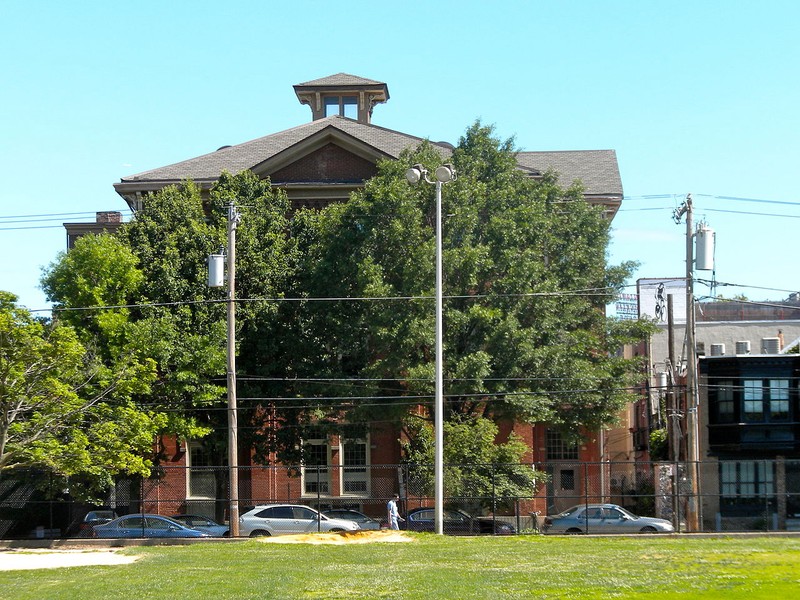The Institute for Colored Youth (1837) and Samuel J. Randall School (1902)
Introduction
Text-to-speech Audio
Images
Photograph of the Institute on May 20th of 2010, Public Domain photograph by WikiMedia contributor SmallBones

Backstory and Context
Text-to-speech Audio
The Institute for Colored Youth was founded by Quaker Richard Humphreys who arrived in Philadelphia in the late 1700s, Humphreys found the social and political conditions faced by African Americans in the early United States violated his Quaker beliefs in equality. As the first major American religious denomination to condemn slavery, Quakers increasingly supported efforts to provide educational opportunities for free people of color and former slaves.
Humphreys was particularly concerned by the difficulty African Americans faced when seeking employment in Philadelphia given the absence of educational opportunities. While the color line was not legally established, few schools were open to African Americans which created a cycle of poverty that was nearly inescapable.
In his will, Humphreys requested thirteen of his fellow faithful to use a large fraction of his estate to found an educational institution, the purpose of which was “to instruct the descendants of the African Race in school learning, in the various branches of the mechanic Arts, trades and Agriculture, in order to prepare and fit and qualify them to act as teachers…” This school was established in 1837 and later became Cheyney University of Pennsylvania.
The Institute was founded by Humphreys fellows in 1837 under the name “the African Institute,” with classes taking place in a farmhouse on Old York Road. Within the year, the school was renamed to the Institute for Colored Youth. In 1846, the farm school closed, and the Institute temporarily became an evening school on Barclay St. The school reopened as a daytime school at Seventh and Lombard. During the school’s stay on Lombard, it began accepting men and women alike as students, with the first female professor, Grace A. Mapps, being hired in 1852.
After 1852, the Institute purchased a number of buildings across South Philadelphia, including the Samuel J. Randall School in 1861. The Samuel J. Randall School would serve as the home of the Institute for Colored Youth until 1902, at which point the Institute moved to Cheyney, Pennsylvania. The Institute later changed its name to Cheyney University. Given Cheyney's origins as a school established in 1837, Cheyney celebrates its unique history as the oldest institution of higher education for African Americans in the United States.
Sources
Cheyney University of Pennsylvania. History of Cheyney University of Pennsylvania. . 04/21/2018. http://www.cheyney.edu/about-cheyney-university/cheyney-history.aspx. Official university history
